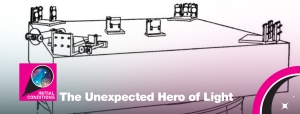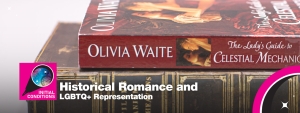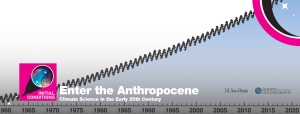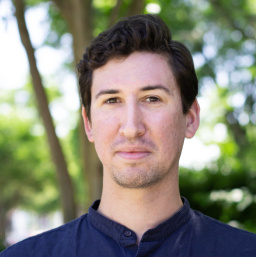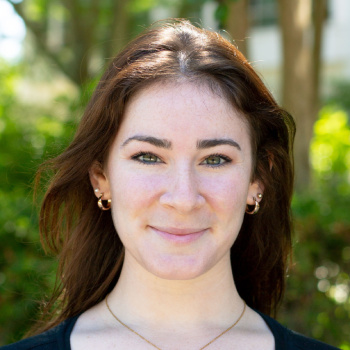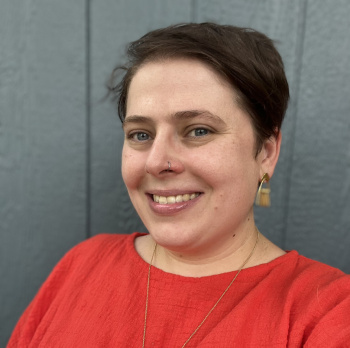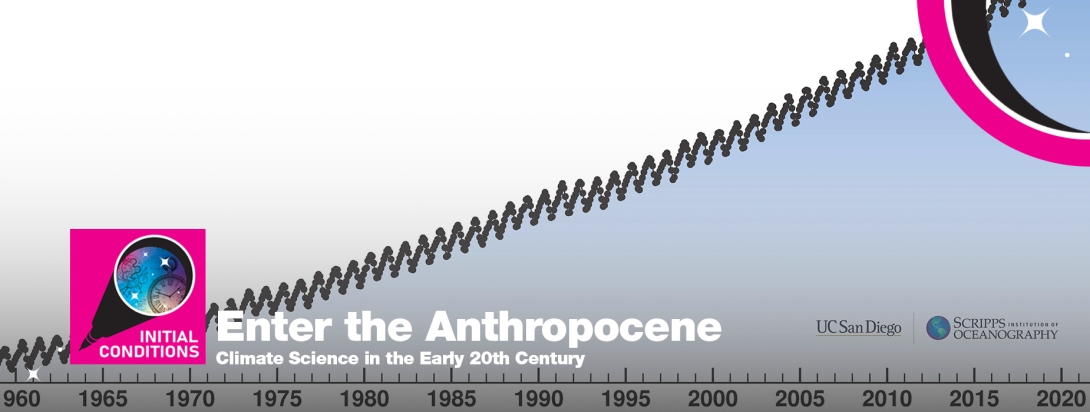
In this episode we discuss the efforts of three scientists–Svante Arrhenius, Guy Callendar, and Charles David Keeling–to figure out exactly what fossil fuel emissions might be doing to the atmosphere and the global temperature. Surprisingly, Arrhenius and other early climate scientists didn’t necessarily think that global warming would be…such a bad thing? But by the 1970s scientists began to push for more concerted efforts to research the effects of increasing carbon dioxide concentrations in the atmosphere. We’ll pick up that part of the story in the next episode. You’ll also hear about Guy Callendar’s contributions to climate science. Guy was a fellow who held no academic degrees in science but did live through a dangerous childhood. We’ll conclude with Charles Keeling and his famous curve showing how the CO2 concentration in the atmosphere began increasing at an accelerating rate during the twentieth century.
Speakers: Maura Shapiro and Justin Shapiro
Initial Conditions Episode 2: Arrhenius, Callendar, and Keeling Date: April 4, 2022
JUSTIN: We're here live at the Niels Bohr Library and Archives.
MAURA: Right, and we're making our way up to the stacks.
ALLISON: Let's do it. Let's go to the stacks.
JUSTIN: I wrote the call number down on this post-it note. It's a nice, balmy 72-degree day here in late February.
MAURA: None of us are worried about climate change... I'm Maura Shapiro.
JUSTIN: I'm Justin Shapiro.
ALLISON: And I'm Allison Rein, your tour guide through the Niels Bohr Library and Archives.
MAURA: Not only have we been worrying about climate change, but we've been thinking a lot about what the initial conditions of atmospheric research in the 19th century reveal about the evolution of climate science.
JUSTIN: (voice over) And to that end, we're here at the Niels Bohr Library and Archives looking for a book from 1908 by the Swedish scientist Svante Arrhenius.
JUSTIN: Here it is. Worlds in the Making. First edition copy.
MAURA: It's a great font.
JUSTIN: Yeah. It's gold with some very pretty lettering. Very simple cover, too. Just the title and Svante's name. And a different picture of Niels Bohr than I'm used to seeing on the inside cover.
MAURA: This is Initial Conditions.
JUSTIN: A physics history podcast.
MAURA: Every physics problem begins with a set of initial conditions that provide the context for physics to happen.
JUSTIN: Likewise, in this podcast, we'll dive into the initial conditions that made science possible. The people, places, and events that have been overlooked and under-studied.
MAURA: So Justin, what makes this book significant?
JUSTIN: Well, this was Svante Arrhenius's way of introducing this idea of anthropogenic climate change to broader audiences. It was written for a more general public than just the community of scientists. And we're going to talk about it. This is five years after he won the Nobel Prize, actually. So he was a pretty big name at the time.
ALLISON: He was confident. (laughs)
JUSTIN: Yeah. Yeah, certainly.
ALLISON: Not an unknown.
JUSTIN: Not an unknown, in 1906. But most of us today have never heard of him. And yet he and the other scientists we're going to talk about today show us how climate change science was conducted in the early 20th century.
MAURA: So we're going to start with Svante Arrhenius. Can you even spell that, Justin?
JUSTIN: Honestly, no. I can barely pronounce it.
MAURA: All right, so what's his story?
JUSTIN: He was born in 1859 to Svante Gustav Arrhenius, and his wife Carolina Thunberg Arrhenius. And I'm not sure if I'm pronouncing that correctly, but the name Thunberg has been in the news quite a lot lately. Especially as pertains to climate change.
MAURA: Right, so is there any relation to Greta Thunberg? I don't know how common that is as a Swedish name.
JUSTIN: I don't know how common a Swedish name it is either, but from what I've been able to tell, yes, actually, Greta Thunberg is a distant relative of Svante Arrhenius. And she's not the only member of the family to be involved with climate research. In addition to Svante, Svante's grandson, Gustav Arrhenius, was also heavily involved in climate change science in the 20th century. So the family has been really interested in these questions of anthropogenic climate change for quite a long time.
MAURA: Must be a very good family line.
JUSTIN: Yeah. Yeah, a whole family of scientists. Svante's granddaughter, Agnes Fold, is also a scientist. But I don't think she works on climate change as far as I know. But a very distinguished family of scientists.
MAURA: Would either make for interesting or boring family reunions, yeah.
JUSTIN: I think interesting, I'd love to attend a family reunion of the 1890s. Maybe not, I don't know if I'd be invited.
MAURA: I have a sense, Justin, that you wouldn't be invited to their family reunion, but maybe. I don't know.
JUSTIN: Yeah, maybe. In any case, so Svante was born in 1859, which Maura, you mentioned on the last episode that John Tyndall actually rushed to publish some of his initial conclusions in 1859, is that right?
MAURA: Right, he reported his conclusions because he had the sense that a bunch of people were investigating the same topic, and it was sort of an arms race. Heat absorption was a hot topic. I need to stop making that joke. It's never been funny, but I can't help myself.
JUSTIN: I exclusively shopped there in middle school. So Tyndall rushes to publish his conclusions in 1859, the same year that Svante Arrhenius is born. And--
MAURA: Oh, coincidence! (laughs)
JUSTIN: That's the thing, is doing the research for these episodes, there are so many of these just like really funny little coincidences in the history of climate change research. But then we can certainly conclude from that that Svante was of a different generation than John Tyndall. And indeed, the questions that he asked about climate change were quite different. But let's give a little bit of family background before we jump into what he wrote on climate change. So like many subsequent figures in the history of climate science-- and we'll talk about Guy Callendar in a moment-- Svante Arrhenius was interested in mathematics from a very early age. And this might be because his father held an administrative position at Uppsala University. Again, I don't know if I'm pronouncing that correctly. But his father held an administrative position at a prominent university in Sweden. Which might have encouraged his studies. And although Svante Arrhenius is known primarily for establishing the field of physical chemistry, it was mathematics that really united his interest in physical chemistry and what we might call atmospheric sciences.
MAURA: Would they have used the term atmospheric science? Like what was their understanding at the time of what it was that they were investigating?
JUSTIN: I don't know. That's an issue that I'm sort of grappling with, is exactly what to call what some of these figures were doing. And we can't... I don't know if we can call it climatology, and I don't know if we can really call it meteorology. Climate science kind of... for most of the 19th to 20th centuries, defies these neat categorizations. As does, I think you'll agree, physics more generally, right? In any case, Svante Arrhenius is born in 1859. He is raised by father, who cultivates an interest in mathematics in him, but there's more going on outside of the family. Sweden is starting to industrialize, especially the southern parts of the country. They had began to industrialize a bit later than other places in northern Europe. Famously the-- I guess it wasn't the UK of the time, but you know, Britain, France, these places where coal was really easily accessible were some of the first to industrialize. But by the middle of the 19th century and into the late 19th century, Sweden was well on its way to becoming an industrialized nation. And so Svante grew up with smokestacks rising all over the place, and smoke rising into the atmosphere all around him. And I have to speculate that it was perhaps seeing that and being a person of that time that kind of help him develop an interest in questions about the relationship between fossil fuels and climate change. What we might call today anthropogenic climate change.
MAURA: Because he was growing up with the industrialized nation?
JUSTIN: Right, right, he was growing up as Sweden was industrializing, and he saw the changes that that created. Right? People moving from the farms to the city, getting jobs in factories. But also some of the more visual elements. And perhaps odiferous? I think that's a word. Maybe aromatic (laughs) aspects of industrialization, right? All that smoke and soot and ash rising into the atmosphere. And so in 1896, Arrhenius publishes what we can say is, as of right now, the earliest-known publication, earliest known paper on anthropogenic climate change. And it was titled something else in German that I'm not going to bother to pronounce, but thankfully others have translated the title for us. "On the influence of the atmospheric carbonic acid content on the temperature of the Earth's surface." So the 1896 paper was meant for scientific audiences, but Arrhenius would go on to popularize his ideas in his subsequent publication, "Worlds in the Making: the Evolution of the Universe," which was published in 1908.
MAURA: A much shorter title.
JUSTIN: So this book was pretty accessible in the Anglosphere as well as in Europe, because there are also editions published in German. And the book was not just about carbon dioxide in the atmosphere, however there was a full chapter on that question. But it was more Arrhenius's attempt to introduce the idea of physical chemistry to broader audiences. So Arrhenius had a pretty good reputation in 1908 when he released Worlds in the Making. He had won a Nobel Prize in chemistry in 1903, and he was on the board that awarded Nobel Prizes. So he was a pretty reputable scientist.
MAURA: And the book he wrote, people would want to read.
JUSTIN: Right. Right. The book had some ideas that were I think a little bit unusual for modern audiences.
MAURA: In what way?
JUSTIN: Well, he argued in favor of panspermia. A bit question at the turn of the century was, how do you get life from inorganic molecules? And he believed perhaps they came from space. A debris from asteriods and meteorites and comets.
MAURA: That doesn't seem unreasonable.
JUSTIN: (laughs) I suppose not. I don't think it's in scientific fashion these days, though.
MAURA: Well, it's sort of fun to believe that.
JUSTIN: Yeah, yeah.
MAURA: So was this book, Worlds in the Making, an attempt to explain how we arrived at the world we have today?
JUSTIN: Yes, using the tools and methodologies of physical chemistry, as he would call it.
MAURA: Mmhmm. And what was his evidence for panspermia?
JUSTIN: Well, the thing is, and as he frankly admits in the introduction to the book, his ideas were not yet published in scientific journals at the time. This was based on sort of the really preliminary process of formulating scientific conclusions, which is, he was talking to his peers and writing letters and corresponding with them. As all scientists do in discussing their ideas, and they had been fairly well-received, but they hadn't yet been vetted by the official peer review process. But again, Arrhenius wasn't writing for scientists. He was writing for audiences more generally to try to explain where the world came from and how we got where we are.
MAURA: I would read that.
JUSTIN: Well, if you want to read it, you can check it out at the Niels Bohr Library and Archives.
MAURA: A very seamless plug. Thank you, Justin.
JUSTIN: Mmhmm. There's more coming in the crank theory episode. So in his chapter on carbonic acid and atmospheric change, Arrhenius used arduous calculations to present the idea that relatively small variations in the amount of atmospheric carbon dioxide could have relatively large effects on the global temperature. And Arrhenius had time to do those calculations, both for audiences more generally and for scientists. Because around the time that he was working out these ideas and the math on carbon dioxide and global temperature, he was going through a very messy divorce with his first wife, who was also his former student. Who threatened to take custody of his first son.
MAURA: Are we picking a side in this divorce, or...?
JUSTIN: I tend not to take sides in divorces that took place more than a century ago. As Spencer Weart writes in The Discovery of Global Warming, "The countless computations could hardly have been justified scientifically."
MAURA: So math was his coping mechanism.
JUSTIN: So math might have been his coping mechanism. But we also have to remember that this is a time before powerful computers and all of these difficult and rigorous calculations would have been done by hand. I bring that up more as a sort of fun anecdote, but also we should remember that Arrhenius grew up as what we might call a math prodigy, right? He really just loved doing mathematics. And Weart gets a bit into speculative territory there. We don't obviously know much about Arrhenius inner life, but it is interesting to think about the idea of using arduous mathematics as a coping mechanism for his wife leaving him and taking custody of their son.
MAURA: There are certainly less healthy ways to cope with divorce.
JUSTIN: Yes, I would say so. And he got a Nobel Prize.
MAURA: Win-win.
JUSTIN: Win-win.
MAURA: So Arrhenius figured it out, and the science was settled. We knew that change in carbon dioxide in the atmosphere would lead to global warming.
JUSTIN: Not so much. So Arrhenius got this article published, but scientists pretty quickly disputed his conclusions. At the time, there was a belief that the oceans would simply absorb a lot of the excess carbon dioxide that was being put out by industry.
MAURA: Mmhmm.
JUSTIN: We know that now to not be true, and we'll get into that story toward the end of this episode. Second of all, Arrhenius wrote in his book for popular audiences that perhaps increase in carbon dioxide and a corresponding increase in global temperatures might not be such a bad thing. And here I want to get into the idea of sustainability, and what it meant to Svante Arrhenius back at the turn of the 20th century, and what it means today looking at, for example, what Greta Thunberg had said on the topic. So, Maura, how would you define sustainability?
MAURA: I would say that it's preserving the environment for future generations.
JUSTIN: That's right, it's sort of managing the environment, managing the climate, managing our resource consumption, with the interest of future generations in mind. Looking down the road, not just at society as it stands today. And, you know, with maybe a few changes in language there, I think Greta Thunberg might agree more or less with that conclusion. But Arrhenius has a very different idea of sustainability. He concludes the chapter about carbon dioxide and atmospheric temperature in Worlds in the Making by writing, "We often hear lamentations that the coal stored up in the Earth and wasted by the present generation without any thought of the future. We may find a kind of consultation in the consideration that here, as in every other case, there is good mixed with the evil. By the influence of the increasing percentage of carbonic acid in the atmosphere, we may hope to enjoy ages with more equitable and better climates, especially as regards to colder regions of the Earth. Ages when the Earth will bring forth much more abundant crops than at present, for the benefit of rapidly-propagating mankind."
MAURA: Ah, so he is cold in Sweden and thinks that global warming could be a good thing because you can grow more crops in colder climates when it's warmer?
JUSTIN: That's correct. So Arrhenius believed that simply by burning fossil fuels, we might actually make a more habitable planet for future generations, and it's no wonder, considering that he grew up and was working in Sweden. And he also wrote about, for example, how a big concern at the time was Ice Ages, when the next one might occur. And obviously in Sweden, that would be a really big question, because their growing season is already so short. And Arrhenius wrote in his chapter in Worlds in the Making and expressed some of his very backwards racial views that in fact the increase in carbon dioxide in the atmosphere might raise temperatures globally enough to prevent another Ice Age, and as he writes, "Which would therefore prevent people in Northern Europe from moving into Africa."
MAURA: That's either very progressive anti-colonialist, or just incredibly racist.
JUSTIN: Of course he completely makes invisible the civilizations that already exist in Africa at the time.
MAURA: Right. Right, right.
JUSTIN: But of course Arrhenius was writing in an era basically just following the massive colonization efforts that took place among several European nations in Africa.
MAURA: He was not thinking about any other population other than Europeans when he was considering that a warmer climate would be beneficial.
JUSTIN: That's correct.
MAURA: And of course he didn't know all the ramifications of climate change, like increased storms, flooding...
JUSTIN: Right. So Arrhenius, you know, he came up in a time of industrialization and he looked at all of the smoke going into the atmosphere, and he wondered, "What is that going to do to global temperatures?" And so he built on some of the work that had been done in the 19th century, adding his own rigorous and arduous mathematics. And demonstrated that in fact, yes, the climate can be influenced by increasing concentrations of carbon dioxide. And so we can look to him as one of these sort of foundational figures in the idea of anthropogenic climate change. That is, human-induced climate change. And now, his conclusions, which he reached at the end of the 19th and the early 20th centuries, were...not what we would expect today from contemporary scientists, for two reasons. One, his conclusions were not widely accepted. Again, most scientists at the time believed that the oceans would simply absorb the excess carbon. But second of all, he actually thought that if climate change were to happen, it might actually be a good thing, especially considering the growing season in his native Sweden.
MAURA: Right so despite kind of being the first person to make these claims, he is not anywhere near where we are today?
JUSTIN: But we're getting closer. So let's talk now about Guy Stewart Callendar. The man who excelled at keeping dates. And that's spelled C-A-L-L-E-N-D-A-R. Not C-A-L-E-N-D-A-R. It's a little play on words.
MAURA: (laughs) That's very funny, Justin.
JUSTIN: Thanks. So I made a point earlier about how Arrhenius was a sort of person of his time, and very influenced by his father. And we see a similar dynamic taking place with Guy Callendar. And I think to understand Callendar's background and his intellectual formation, we need to talk a little bit about his dad, Hugh Callendar. Hugh was born only four years after Svante Arrhenius, and his son, Guy, would be born in 1898, just two years after Arrhenius published that first article for scientists on carbon dioxide and climate change. So again, another interesting coincidence. But also we can see very clearly the ways that these subsequent generations pushed forward the idea of anthropogenic climate change. First Svante Arrhenius born in 1859, as Tyndal rushes to publish his conclusions, and then Guy Callendar coming two years after the first scientific article on anthropogenic climate change. But turning back to Hugh. Hugh was very much one of these late-19th century figures who was interested in both science and engineering. He was a consummate tinkerer. He loved fixing objects and making them work differently or better, and in many cases worse. For example, he bought one of the first motorbikes available in the UK in 1902, and he quickly refashioned it as a tricycle with comfortable seating and a cooling system, so he could take his wife, Victoria, into the hills and the countryside around their estate.
MAURA: Very romantic.
JUSTIN: Very romantic. When he was not teaching physics at Imperial College, he was playing around with these different devices. But sometime after Hugh bought the bike and fixed it up, he and his wife inadvertently indulged in one of the favorite pass-times of late 19th and early 20th century scientists, getting knocked over by a horse.
MAURA: (laughs)
JUSTIN: Yeah the more general story is that as rail travel increased in industrializing nations, you had this sudden massive influx of consumer goods and other goods into cities, and so you had to figure out-- and that's fine, you know, you can get stuff from the farms to the cities and from city to city. But the big kind of issue, the big bottleneck, was getting things around cities. Right? So all this stuff is coming in all of a sudden. But there simply isn't the same infrastructure that's keeping pace with how many goods are coming in. And so quickly, people keep buying horses and this is right just on the cusp of trucks and automobiles. And so there are just way more things moving around on streets all of a sudden, and so people got into accidents all the time. Similarly in Chicago, something like 900 people a year were just like struck by a train. And so there were just people walking around all the time with limbs missing because they were hit by things. But the other famous example of that would be P.R. Curie, Marie Curie's husband, did not die of radiation poisoning. He died because he got run over by a carriage. So Hugh did the sensible thing after the accident, and bought a Stanley Steam Car 1907 model. But by nature, he couldn't leave well enough alone, and he insisted pretty quickly on taking the engine and component pieces apart to figure out exactly how it worked. And how it could be improve. And for all of his efforts, what he got was a broken pipe that sprayed hot steam all over his family on one of their country drives.
MAURA: An expensive and dangerous hobby.
JUSTIN: I say all this to give examples of the type of childhood that Guy had. The family was pretty well-off by contemporary standards. And their dad, Hugh Callendar, built a laboratory that was attached to their spacious country house. And in this laboratory, Hugh encouraged the kids to tinker and experiment and play with different devices. That is, until Guy's brother, Leslie, blew up the laboratory trying to create TNT.
MAURA: Oh my god, okay. And was anyone hurt?
JUSTIN: Nobody was harmed in that accident, as far as I know, but Leslie also inflicted an injury on his brother Guy. In their childhood, when Guy was five years old, he was blinded in his left eye after Leslie stuck a needle in it.
MAURA: Oh my-- Leslie seems like someone I would try to avoid.
JUSTIN: Yes, I don't know where the record picks up on Leslie. But I hope he got over some of his childhood proclivity towards mischief.
MAURA: So was Guy blinded? How do you heal from a needle in the eye?
JUSTIN: As far as I know, and this is based on the biography of Guy Callendar provided by James Roger Fleming, Guy was just blind in his left eye for most of his life. Which was a bit of an issue, because one of his favorite pursuits was tennis.
MAURA: Interesting. So blind in one eye would mean that you don't have depth perception.
JUSTIN: Right. So maybe tennis was a coping mechanism.
MAURA: Some people have math, some people have tennis.
JUSTIN: So Guy's intellectual and professional development was deeply informed, shaped, and guided by his father. Ineligible to serve in the front lines during the First World War due to his poor eyesight, Guy instead worked in his father's laboratory at Imperial College. He soon enlisted in the Royal Navy, serving on a WWI submarine and using many of the instruments that his father had, in fact, built.
MAURA: There is not a single submarine in the world I would want to be on today or in... whenever you said.
JUSTIN: Well you know, Jimmy Carter, who we'll talk about in the next episode, served on a submarine.
MAURA: That doesn't change my opinion of submarines. I still would not ever want to be on one.
JUSTIN: Fair enough. After the war and after his service on the submarine, Guy returned to Imperial College, continuing his study of steam and steam engines. And in this pursuit, he was a meticulous record-keeper, keeping track of the power and output of steam at different pressures and temperatures. And using these observations and working with his father, he developed what are called the Callendar Steam Tables. And he published several of these throughout his life, and they granted him a good deal of recognition in the community of steam engineers. But it's important to note here that Guy didn't have any sort of formal training in physics or thermodynamics or anything of that sort. He worked with machines. He was more of an engineer and technician than a scientist. But this meticulous attention to records and observations and documenting these aspects of the natural world, in steam engines and sort of more to the point weather, would help him develop some of these ideas about anthropogenic climate change, that will be carried into the next generation. But we're coming to that story. In addition to his records about steam tables, Guy also kept really meticulous records about the weather. Air pressure, wind speed, temperature, these sorts of things. And we can speculate that perhaps (laughs) this had something to do with his love of the game of tennis, especially playing outdoor tennis. But I'm not so sure why he was so interested in the weather. And according to his biographer, James Roger Fleming, Guy S. Callendar working largely alone and from home established the carbon dioxide theory of climate change in its essentially modern form.
MAURA: Hmm. So just falling out of his hobby of measuring the weather, he lays the foundation for modern global warming theory?
JUSTIN: Right. The question of carbon dioxide concentrations in the atmosphere became a sort of passion of Guy Callendar's. And he became interested over time in figuring out exactly what the baseline level of carbon dioxide concentrations were in the 19th century, and figuring out if they were rising. And he used kind of unconventional methods to answer these questions. For example, he went into the old Henry Cavendish archives and got some of the original glass jars that Cavendish had used to capture air from the atmosphere in the early 19th century.
MAURA: Cavendish bottled air and then kept them in jars. Does that change the air content?
JUSTIN: I don't know. I mean it was a fairly unreliable method by contemporary standards. We can certainly say that. But that was for the very early 19th century. Callendar also had access to some old weather station data that he used, and in 1938, he was ready to present his findings to the Royal Meteorological Society. And the paper that he presented in 1938 was titled "The artificial production of carbon dioxide and its influence on temperature." And again, I want to point to that use of the word "artificial." The artificial production of carbon dioxide, he's talking about fossil fuels. He's talking about human-induced carbon increases in the upper atmosphere. What, again, we'd call more simply anthropogenic climate change. And so in 1938, he presented his paper titled "The artificial production of carbon dioxide and its influence on temperature" to the Royal Meteorological Society. And this paper, as I mentioned, he used some unconventional methods, like going back into the archives of people who had previously captured air samples. But he also had access to data generated by 200 weather stations located around the world. And so he was able to document the fact that increase in carbon dioxide levels were in fact not just a local or a regional phenomenon restricted to industrialized or industrializing countries, but was a global phenomenon. And in this paper, he established a baseline level of 290 parts per million of carbon dioxide throughout the 19th century. And that baseline is really important, because it provides a context. It provides some way of knowing how much carbon dioxide concentrations in the atmosphere were increasing during the 20th century.
MAURA: He presents this paper to the Royal Meteorological Society. How did they accept this fairly new information presented by an outsider?
JUSTIN: Well, there was not consensus around the idea of increasing carbon dioxide, or even the idea of carbon dioxide shaping the global temperature at this period in the 1930s. Guy would continue over the course of his career to publish 10 scientific articles and 25 shorter pieces for more general audiences. But by the time he died in 1964, the science was still kind of unsettled. In the 60s, you see a growing consensus that, yes, fossil fuels can shape the global climate. Fossil fuels can perhaps increase global temperatures by increasing the concentration of carbon dioxide, but the science in the 60s was still kind of unsettled. And in the next episode we'll talk about this sort of growing consensus around the issue of anthropogenic climate change. And by the late 70s, a sense that the issue was actually quite dire. But the reception was a bit mixed. Guy Callendar had his supporters and his detractors in the scientific community.
MAURA: Did this disprove the idea that oceans would absorb carbon dioxide?
JUSTIN: It seemed to indicate that, but the sort of question was the next step. So does this actually mean increasing temperatures? This is a question that Arrhenius had tried to work out, and it wasn't fully answered during Guy's time. So for one thing, towards the end of his life in the early 60s, there was a series of extremely cold winters that seemed to run against this idea that increasing carbon dioxide was in fact increasing global temperature. Scientists couldn't feel the effects of climate change. They couldn't really see it, and it couldn't be measured in those winters. And Guy actually died at the tail end of that cold snap, in 1964 of a heart attack at a relatively young age.
MAURA: It's interesting how weather and climate are two different things.
JUSTIN: That is certainly true. But what Guy Callendar was able to demonstrate, pretty definitively, pretty decisively, was that yes, the concentrations of carbon dioxide over his lifetime and over the course of the 20th century were increasing in the upper atmosphere. The concentration of carbon dioxide in the upper atmosphere was increasing. And that's really important. That's one very important piece of this puzzle that we're putting together on the history of climate change science.
MAURA: So he comes to these conclusions that, you know, there is increase in carbon dioxide content in the atmosphere, but at the end of the day, he still was not a meteorologist. He was not an atmospheric scientist. He was an engineer. Did that impact how his ideas were received by the science community at large?
JUSTIN: I think so. I mean and again, as you point out, it's really important to note that Guy Callendar was not a trained scientist. He was a steam engineer. He was more of a technician. But by the 1950s, Guy Callendar and his ideas about the relationship between carbon dioxide and atmospheric gases and their increase in concentrations... So Callendar found some support among scientists. People like Gilbert Plass, David Brunt, and Sydney Chapman supported some of his conclusions. But others, especially Roger Revelle and Hans Suess of the Scripps Institution of Oceanography, were a little bit more apprehensive about the notion. And famously, in a 1957 paper that referred to increasing carbon dioxide concentrations in the atmosphere as "mankind's greatest experiment, one that can never be replicated." Suess and Revelle actually contradicted themselves internally in that paper. And so I bring that up just to point out that Callendar's ideas were really influential, and helped provide some solid evidence about increasing carbon dioxide concentrations. But we're still a couple decades away from any firm scientific conclusions about what those increasing concentrations meant.
MAURA: Until we can really make effective computer models, the only way to see what happens when you increase carbon dioxide in the atmosphere is by increasing carbon dioxide in the atmosphere.
JUSTIN: That's right. And we're going to see how improved modeling and sort of more scientific debate about climate change in the 60s, and especially 1970s, led to a sense of urgency by the time of the Carter administration. Just about 15 years after Guy Callendar died. So Callendar died in 1964, during one of these unseasonably cold winters. And we can only speculate about how he understood his life work at that moment. But the historical record demonstrates that he indeed had a major influence, especially given his academic background, on the field of climatology. He revisited and brought up older ideas that climate change could indeed be induced by humans through their consumption of fossil fuels. After he died, Callendar's daughter Anne donated her father's papers, notebooks, and other materials. Including an unfinished manuscript he had written about anthropogenic climate change. To Derrick Justin Chauve of St. David's College. In 1984, Chauve wrote to Anne mentioning that he had been visited by an American scholar from California. The scholar was Charles David Keeling. Keeling had visited Chauve to borrow Callendar's notebook from 1939 to 1940, in which Callendar had detailed carbon dioxide levels from the early 20th century. Keeling wanted to use the notebook as part of the basis for a 1986 publication about historical carbon dioxide levels in the early 20th century. So let's turn now to the life and work of Charles David Keeling. In 1957, Revelle and Suess claimed that humans were carrying out a large-scale geophysical experiment of a kind that could not have happened in the past, nor be reproduced in the future. While they were unsure about the role of oceans, and the biosphere, in absorbing carbon dioxide, they did advocate for continued study. In the same year that they published that paper, Revelle hired Charles David Keeling. In his youth, Keeling was an avid outdoorsman, and after completing his PhD a few years before 1957, he found himself more and more attracted to the field of geology. And that gave him the opportunity to travel to the west and camp and hike and sort of conduct scientific observations and measuring things, as he was enjoying the outdoors. It seemed like a great opportunity for him. And while hiking and camping in the woods of the Pacific Northwest, he started to capture air samples in vacuum tubes. This wasn't necessarily a new method. I mean there were new materials that went into it. But by capturing these air samples in different places in the Pacific Northwest, he wanted to get a sort of more accurate understanding of the changing concentration of carbon dioxide in the atmosphere.
MAURA: Was he specifically interested in carbon dioxide?
JUSTIN: Yes. Very much so. According to Roger Revelle in a 1989 interview, Keeling was really single-minding in his study of carbon dioxide. As Revelle said in that 1989 interview, he never really wanted to do anything else but measure carbon dioxide. And he wants to measure it with the greatest precision and the greatest accuracy he possibly can. And he's done that. He's measured it more or less consistently to 1/10th of a part per million and continuously for 30 years. It's really quite a remarkable record.
MAURA: That is quite a remarkable record.
JUSTIN: So as I mentioned, Keeling joined the Scripps Institution of Oceanography in 1957, and he very quickly set out trying to get funds to support his efforts to measure carbon dioxide, and to build a new observatory in Mauna Loa, Hawai'i for that very purpose. And the funding dance was very complicated, there were a couple times in the early 60s when Keeling almost lost out on funding. Different supporters of his research kind of moved funds around where possible. And I say all of this to indicate that yeah, in the late 50s and early 60s, there wasn't so much emphasis on this sort of very precise measurements of carbon dioxide. It took a lot of effort for Keeling to establish the significance and the importance of the work that he was doing. But thankfully, he found a lot of really important backers in different federal offices, in different research institutions, in different universities, to support his efforts. So he was able to eventually get this carbon dioxide observatory in Mauna Loa, Hawai'i built.
MAURA: Of course, it would be built on indigenous land.
JUSTIN: Yeah and we should recognize here that it was built on indigenous land, and it continues to operate on indigenous land. I'm sure the interests of the indigenous people of Hawai'i were not at all thought of when this observatory was built. Keeling was thinking about what the location would offer. So the observatory is located in Mauna Loa. It's on a volcano. Thousands of feet above sea level, and far from any sort of industrial site or any major city. And so Mauna Loa benefitted from having relatively still air, and distance from any sort of variables that might lead to an over-reporting of carbon dioxide concentrations. The project was expensive, but Keeling was able to get it funded and got continuing funding for his work, despite a good degree of precarity early on. And through his studies of historical carbon dioxide levels and his constant monitoring of carbon dioxide, Charles David Keeling created one of the most powerful and significant visual examples of how much humans were shaping the global climate. And, humbly enough, this powerful visual representation is called the Keeling Curve. Named for it--
MAURA: He probably did not name it himself, though.
JUSTIN: No, he didn't. No, I think it's named after the fact. Maura, what is the Keeling Curve?
MAURA: The Keeling Curve tracks the level of carbon dioxide over the span of, what, how many years? His career.
JUSTIN: From the late 1950s until today, yeah.
MAURA: Right, and the Keeling curve shows kind of this exponential increase in carbon dioxide content. So when mapped with global temperatures, you can kind of see the correlation as it progressed.
JUSTIN: Right, and we already had a baseline for the concentration of carbon dioxide in the 19th century. That was figured out by Guy Callendar. But what Keeling did was he continued to trace the concentration of carbon dioxide in the atmosphere, and what his findings revealed were, yes, a sharply-upturning curve. But it's a little bit more complicated than that. We do know that carbon dioxide concentrations are increasing, but they don't increase uniformly over the course of a year. So if you zoom in on one or two years on the Keeling Curve, what you see is a parabola. An up and a down and an up and a down. With of course the midrange on the parabola increasing year after year. But the reason why if you zoom in, it's parabolic is just simply because of nature. So most of the land in the world is concentrated in the Northern Hemisphere, and with all that land, most of the vegetation in the world is concentrated in the Northern Hemisphere. So in the spring, as trees flower and as leaves come out and everything that trees do, they take in more carbon dioxide. Which they need in the process of photosynthesis to make their food. And then in the fall, as those leaves are shed and those leaves decay, carbon dioxide is then released. So there's an annual cycle in the amount of carbon dioxide that plants take in. Now, what we also see though is an increasing average concentration in carbon dioxide levels in the atmosphere years after year. So the small variations don't affect the overall trend towards increasing atmospheric carbon dioxide levels.
MAURA: And not only is it increasing, it's accelerating. So it's more than just a straight line going up. It's this zig-zaggy but increasing slope that would shoot to the moon if it could.
JUSTIN: That's right. Just to put a finer point on that, in 1958, Keeling put the concentration of carbon dioxide in the upper atmosphere at 313 parts per million. As of last year, the average concentration of carbon dioxide in the upper atmosphere was 412 parts per million.
MAURA: Wow.
JUSTIN: So that's nearly a 100 parts per million increase in just under half a century. And once again, what Callendar had found earlier than Keeling is that the background concentration of carbon dioxide in the atmosphere was 290 parts per million.
MAURA: Okay, so over the span of 60 years, from 1900 roughly to 1958, there's an increase of, what, 25 parts per million. But from 1958 to 2021, it's an increase of almost 100 parts per million.
JUSTIN: That's right. And sot he Keeling Curve, what it does is it provides this really simple and easy to read and easy to understand depiction of what's really kind of the driving force of climate change. And that is, fossil fuels and carbon emissions from them. And so what I want to emphasize at this point is that there's a really clear thread that runs from the early work of Svante Arrhenius, who pointed out that carbon dioxide emissions could increase global temperatures and did the math to show how they might, to Guy Callendar who made the first attempts to really measure and get an accurate reading no carbon dioxide concentrations in the atmosphere in the 19th century, and then in his own lifetime, and then Charles David Keeling, whose really powerful image, the Keeling Curve, shows how carbon dioxide concentrations were increasing at an accelerated rate. Over his lifetime and with the work of subsequent scientists over the course of our lifetimes as well.
MAURA: So from the first episode to now, we've learned how our understanding of carbon dioxide has evolved. First, understanding that it does in fact absorb heat, and that because of that, the Earth is warm. To now, not only do we know what the greenhouse effect is, but that carbon dioxide concentration in the atmosphere is increasing and because of that, so too will global temperature.
JUSTIN: That's right. And so with Keeling, finally, by the 1960s, 1970s, we might say that global warming had been discovered.
MAURA: Huzzah.
JUSTIN: Yes. And we're going to learn a little bit more about how scientists responded to that discovery in the next episode.
MAURA: Thanks so much for joining us today. Be sure to download our next episode, where we fast-forward to the 1970s, the start of the EPA.
JUSTIN: When that guy...who was "not a crook" was president.
MAURA: We'll meet a handful of climate scientists who had the uncanny ability to see into the future.
JUSTIN: To learn more about our discussion today, and to find related photographs, blog posts, and transcripts for this episode, check out our website at AIP.org/InitialConditions or click the link in the episode description.
MAURA: Also a shout out today to our tour guide and the associate director of library collections and services at the Niels Bohr Library and Archives, Allison Rein.
JUSTIN: This episode was created, researched, and written by Maura Shapiro and Justin Shapiro.
MAURA: Initial Conditions is generously sponsored by the Alfred P. Sloan Foundation.
JUSTIN: I'm Justin Shapiro.
MAURA: I'm Maura Shapiro. No relation.
JUSTIN: And you've been listening to Initial Conditions.
VOICEOVER: From the Niels Bohr Library and Archives at the American Institute of Physics.
Arrhenius, Svante. “On the Influence of Carbonic Acid in the Air upon the Temperature of the Ground.” Philosophical Magazine and Journal of Science 5, no. 41 (April, 1896): 237-276. https://www.rsc.org/images/Arrhenius1896_tcm18-173546.pdf (accessed July 11th, 2022).
This is a photocopy of Arrhenius’s groundbreaking publication regarding atmospheric carbon dioxide and the greenhouse effect. Translated from Swedish into English, the article shows that questions about carbon dioxide and climate change were beginning to circulate in scientific circles at the turn of the nineteenth century.
McCarthy, James J. “Reflections On: Our Planet and its Life, Origins, and Futures.” Science 326, no. 5960 (December, 2009): 1646-1655. https://www.science.org/doi/10.1126/science.1184937 (accessed July 12th, 2022).
In addition to providing a succinct history of twentieth century climate science, this article fills in some of the pieces of the story that we didn’t have time to talk about in this week’s episode. McCarthy also describes some of the tools and methods that scientists have used to study the global climate.
Hickman, Leo. “How the Burning of Fossil Fuels was Linked to a Warmer World in 1938.” The Guardian. April 22nd, 2013. https://www.theguardian.com/environment/blog/2013/apr/22/guy-callendar-climate-fossil-fuels (accessed July 19th, 2022).
This article gives a brief history of Callendar’s research on climate change. It commemorated the 75th anniversary of the publication of his first paper and presentation to the Royal Meteorological Society.
Interview of Roger Revelle by Earl Droessler on 1989 February 3, Niels Bohr Library & Archives, American Institute of Physics, College Park, MD USA, www.aip.org/history-programs/niels-bohr-library/oral-histories/5051 (accessed July 12th, 2022).
Revelle was a major figure in climate research. Trained as an oceanographer, he was recognized as an expert in the burgeoning field of climate science from the 1950s until his death in 1991. In this oral history he discusses his research and, in moments germane to this episode, his work with C.D. Keeling.
University of California, San Diego. The Keeling Curve. https://keelingcurve.ucsd.edu/ (accessed July 12th, 2022).
A daily record of global atmospheric concentration as measured at the Mauna Loa Observatory.
Weart, Spencer. The Discovery of Global Warming: A Hypertext History of How Scientists Came to (Partly) Understand the Problem of Climate Change. Center for History of Physics at the American Institute of Physics, https://history.aip.org/climate/index.htm (accessed June, 2022).
Weart’s excellent–and frequently updated–website offers a wealth of primary and secondary sources for anyone interested in the history of climate science. You can use it to learn more about early efforts to study anthropogenic climate change.
Kerry Thomspon of Thompson House Productions produced this show. Allison Rein is executive producer. Initial Conditions: A Physics History Podcast is generously sponsored by the Alfred P. Sloan Foundation.
Sources and Collections Used
Arrhenius, Svante. Worlds in the Making: The Evolution of the Universe. New York and London: Harper, 1908.
Fleming, James Rodger. The Callendar Effect: The Life and Work of Guy Stewart Callendar (1898-1964), the Scientist Who Established the Carbon Dioxide Theory of Climate Change. Boston: American Meteorological Society, 2009.
Weart, Spencer. The Discovery of Global Warming: A Hypertext History of How Scientists Came to (Partly) Understand the Problem of Climate Change. Center for History of Physics at the American Institute of Physics, https://history.aip.org/climate/index.htm (accessed June, 2022).







